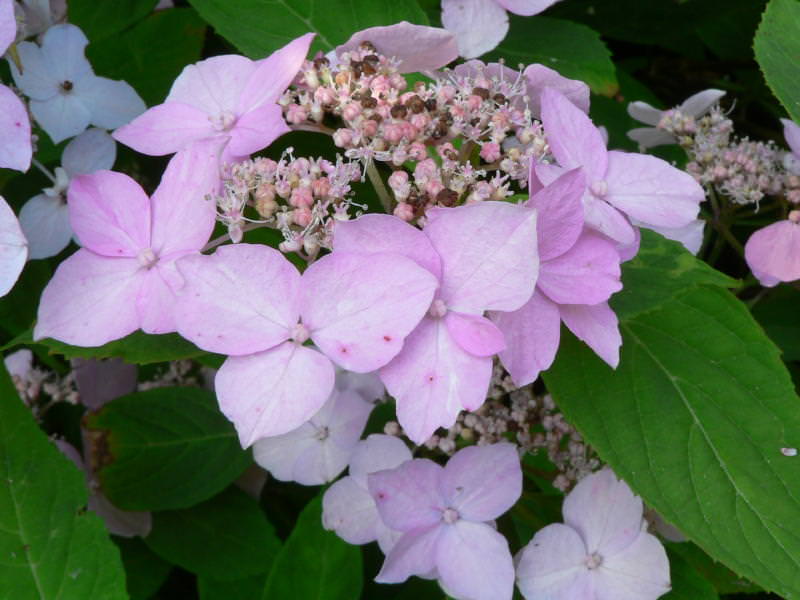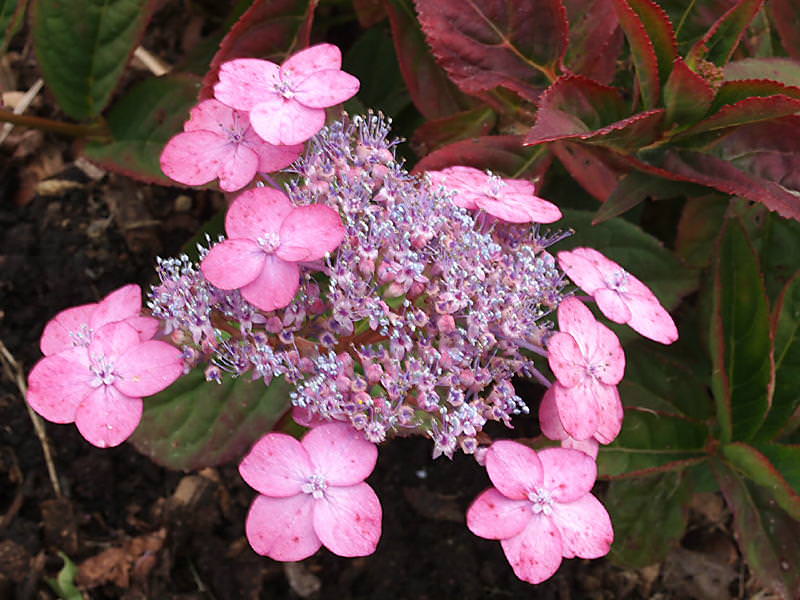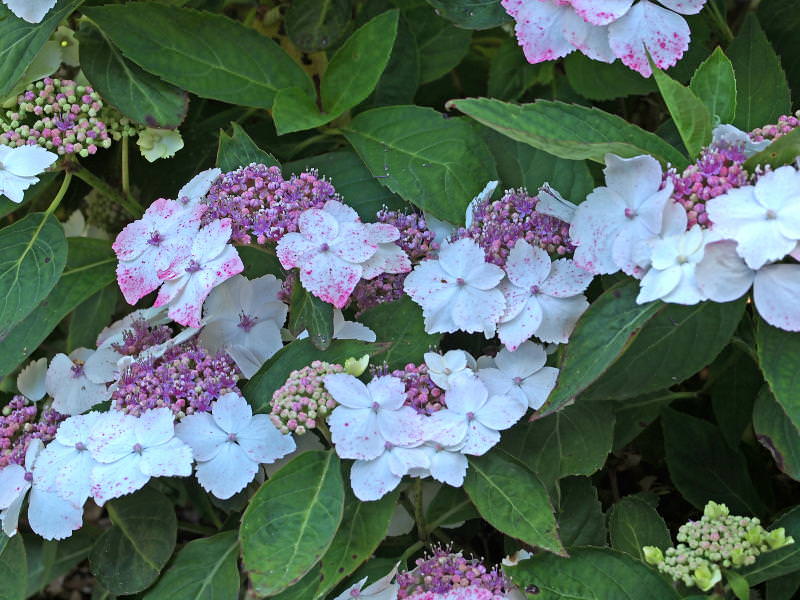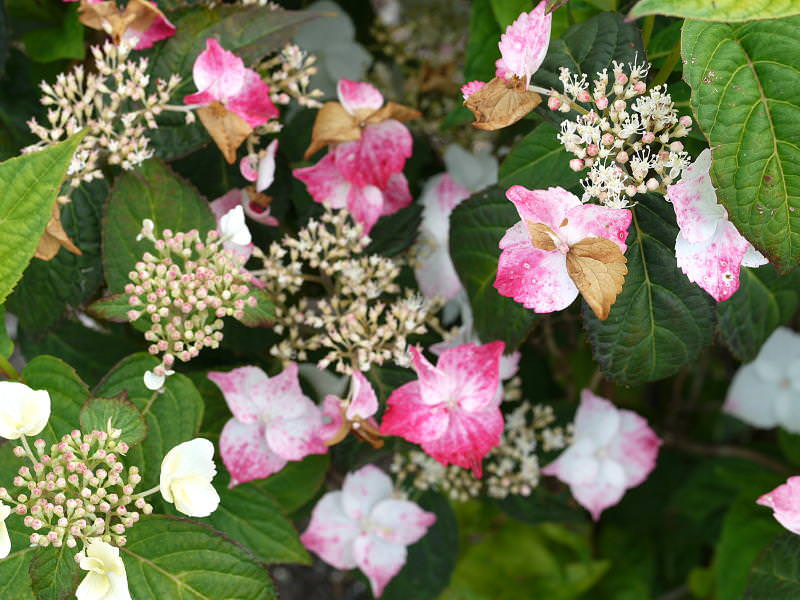
This species is native to Japan and much of both collecting from the wild and breeding of new cultivars has been carried out in Japan thus explaining the mostly Japanese names. They are mostly smaller and more delicately structured that hydrangea macrophylla lacecaps. Their leaves are smaller and thinner and often colour reddish in the autumn. The flowers heads are also smaller and more delicate, however this does not distract from their beauty as there are plenty of stunningly beautiful cultivars now available.


serrata ‘Benigaku’
Bed N: Plant 03 A very old Japanese cultivar. Flowers in June with few white ray florets wich age...

serrata ‘Bluebird’ (Japan)
AGM 1984, 1992 AM 1960 A lovely small to medium shrub covered with pink or blue lacecap flowers,...

serrata ‘Cherry Lips’ (Grug Farm)
Bed J: Plant 10 Syn. serrate 'Chiba Cherry-lips' Crug Farm Nursery say: One of our original...

serrata ‘Chinensis’
Bed C: Plant 14 The name means From China. A slender plant never getting taller than 40cm. The...

serrata ‘Fuji Snowstorm’
Not yet planted into the collection: This is a variegated cultivar that originated in Mill Cottage...

serrata ‘Fuji Snowstorm’ (larch cottage)
Bed C: Plant 27 This cultivar is a sport from a plant of serrate 'Fuji' and was found at the Larch...

serrata ‘Koreana’ (Korea)
Bed V: Plant 01 A dwarf plant with domed heads of purplish pink flowers in June and again in...

serrata ‘Macrosepala’
Bed V: Plant 16 Name mean; With large sepals A dwarf plant with four or five white ray florets...

serrata ‘Macrosepala’
Bed V: Plant 16 The name means with large sepals. A dwarf plant with four or five white ray...
